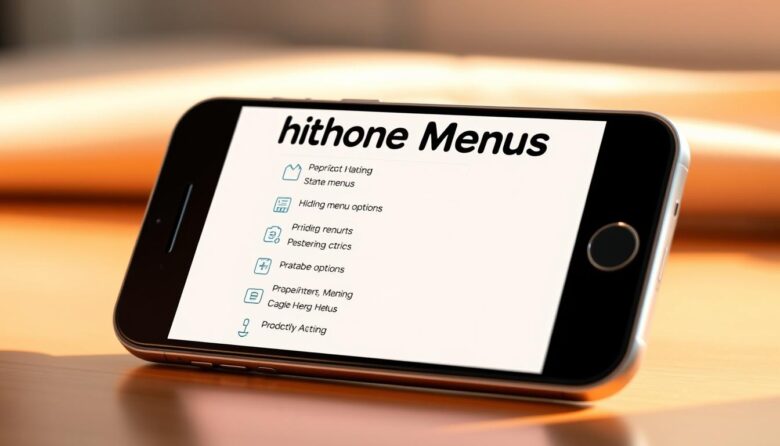Your smartphone holds more power than you might realize. Beyond standard settings lies a network of advanced tools and features built directly into Android devices. These specialized functions are accessible through unique dialer codes – combinations you type like phone numbers to unlock deeper controls.
Manufacturers design these codes for testing hardware, tracking performance, or adjusting system behavior. While technicians often use them for repairs, everyday users can benefit too. Codes vary between brands – Samsung’s One UI and Xiaomi’s MIUI have distinct options alongside universal Android commands.
Exploring these areas lets you check battery health, sensor accuracy, or network details most people never see. However, modifying settings without proper knowledge can cause issues. Always research codes before using them and avoid changing values you don’t understand.
This guide shows how to safely access and navigate these tools. You’ll learn which codes work across devices and which require specific models. With careful exploration, you’ll gain insights into your phone’s operations typically reserved for developers.
Understanding Hidden Menus and the Secret Diagnostic Menu
Android devices contain specialized tools accessible through coded commands. These features operate through two systems: MMI (Man Machine Interface) and USSD (Unstructured Supplementary Service Data). While both use star and hash symbols (*#), they serve different purposes. MMI codes work offline for internal device checks, while USSD connects to carrier networks for account services.
Overview of Hidden Codes on Android Devices
MMI codes let you test hardware components like cameras or sensors without internet. For example, typing *#0*# on many Samsung phones opens a testing panel. USSD codes, like *#100#, often show prepaid balances. Both start with * and end with #, but their functions differ completely.
Manufacturers customize these codes. A code that works on a Google Pixel might not function on a Xiaomi device. Always verify compatibility before use to avoid errors.
Benefits and Risks of Accessing Diagnostic Menus
Exploring these tools offers advantages. You can monitor battery health, check signal strength, or identify faulty hardware. Some codes reveal network details or reset connectivity settings.
However, risks exist. Entering wrong codes might erase data or change critical configurations. Always back up your device first. Research codes thoroughly and avoid altering unknown settings.
Navigating the World of Android Hidden Codes
Android’s hidden capabilities extend beyond standard features through specialized code systems. These tools use your phone dialer as a gateway to advanced functions, combining symbols and numbers to trigger specific actions.
USSD and MMI Protocols Explained
USSD protocols handle real-time communication with carrier networks. They retrieve account balances or activate services like call forwarding. These codes require cellular connectivity and often display results as pop-up messages.
MMI codes work offline for hardware checks and system tests. A code like *#0*# activates sensor diagnostics on many devices. Both systems use asterisk-hash bookends but serve distinct purposes.
Generic Codes for Quick Diagnostics
Universal codes provide immediate access to critical device information. Enter *#06# to view your IMEI number – essential for carrier registrations. Use *#07# to check radiation levels and ensure safety compliance.
For network optimization, *#*#4636#*#* reveals detailed connection statistics. This includes signal strength metrics and data usage patterns. These commands work across most Android versions without special permissions.
Always verify a code’s purpose before execution. While most are read-only, some might alter configurations. Bookmark reliable sources for code lists specific to your device model.
Exploring Device-Specific Secret Codes
Mobile manufacturers equip their devices with unique command systems tailored to their hardware and software architectures. These brand-exclusive tools enable deeper system interactions than universal Android codes, reflecting each company’s engineering priorities.
OEM Customizations and Brand-Specific Menus
Manufacturers design codes to address specific technical needs. Samsung prioritizes component testing, while Xiaomi emphasizes manufacturing quality checks. Motorola focuses on network optimization through specialized firmware tools.
Examples From Samsung, Motorola, and Xiaomi
Samsung phones use *#0*# to launch interactive hardware tests for screens and sensors. The code *#0228# reveals detailed battery metrics like voltage fluctuations. Technicians rely on these for precise device evaluations.
Motorola’s *#*#2486#*#* unlocks engineering menus for radio frequency adjustments. This helps optimize signal reception across different networks. Their *#07# code displays regulatory certifications for devices sold in specific regions.
Xiaomi implements *#*#64663#*#* for comprehensive component verification. This test suite checks camera focus accuracy and button responsiveness. The code *#*#284#*#* generates system logs that help developers troubleshoot software conflicts.
These brand-specific codes demonstrate how manufacturers build specialized tools into their firmware. Always verify compatibility before use, as functionality varies between models and OS versions.
Practical Steps to Accessing Hidden Diagnostic Menus
Mastering hidden phone features requires precision and preparation. Follow these guidelines to explore advanced tools while maintaining device stability.
How to Dial and Enter Codes Safely
Start by opening your phone’s stock dialer app. Third-party apps often fail to process special sequences. Type codes exactly as shown – missing a single asterisk or hash symbol can produce errors.
Most commands activate when you tap the final # symbol. For example, *#06# instantly displays your IMEI number. Some codes require pressing the call button, especially those connecting to carrier networks.
Pre-Use Precautions and Device Backup
Always back up your settings and data before testing codes. Cloud backups or local storage options ensure recovery if changes cause instability.
Verify code compatibility with your Android version and brand. A code that works on Samsung devices might disrupt Xiaomi phones. Cross-reference multiple sources to confirm functionality.
Exercise caution with codes that modify system behavior. Start with basic information requests like battery health checks before attempting advanced tests.
Enhancing Your Phone’s Performance Through Hidden Features
Unlock your phone’s full potential by tapping into hidden tools that optimize daily performance. These codes provide actionable insights for maintaining peak functionality across key systems.
Using Diagnostic Data for Troubleshooting
The *#*#4636#*#* code reveals critical battery statistics and network details. Track app power consumption patterns to identify energy-draining applications. View real-time signal strength metrics to pinpoint connectivity issues.
This tool also offers Wi-Fi analysis and network type preferences. Run ping tests to evaluate data transmission stability. Always cross-reference findings with your carrier’s network version requirements.
Improving Battery, Network, and Hardware Health
Extend battery life through voltage monitoring and temperature checks. Specific codes display charging cycle counts – crucial for assessing replacement needs. Replace swollen batteries immediately if detected.
For network optimization, analyze frequency bands and signal quality. Adjust settings to match your location’s strongest carrier signals. Hardware test sequences verify camera focus accuracy and speaker output levels.
Regularly check your IMEI number using *#06# to ensure device authenticity. Combine these insights to create maintenance routines that prevent hardware issues before they disrupt functionality.
Unlocking Your Phone’s Potential
Modern smartphones contain layers of untapped functionality accessible through specialized codes. These combinations unlock hardware verification tools and system analytics that go beyond standard settings. Universal commands like *#06# display critical device information, while GPS test codes help optimize location accuracy.
Advanced users leverage these tools to monitor software performance and identify potential issues. Codes revealing MAC addresses or firmware details provide insights typically reserved for technicians. Regular checks using *#*#232338#*#* can help maintain network stability and hardware health.
Mastering these techniques transforms routine phone use into proactive system management. You’ll gain capabilities to assess battery cycles, evaluate sensor accuracy, and verify connectivity statistics. Always cross-reference code functions with your specific model to ensure compatibility.
Approach exploration cautiously – prioritize information-gathering codes before testing advanced functions. With responsible use, these tools empower you to extend your device’s lifespan and optimize daily performance like a professional.



